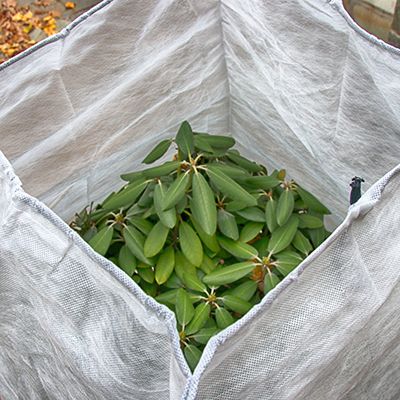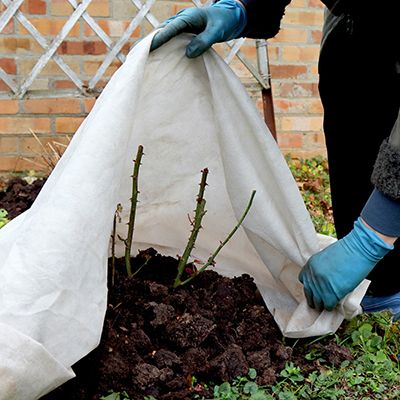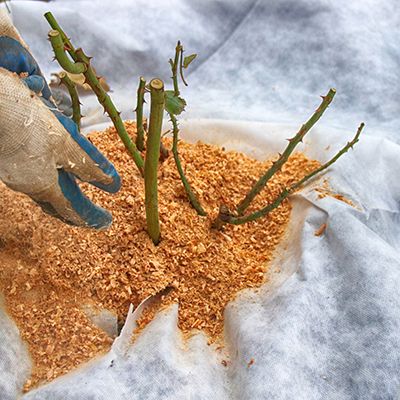


Preventing Frost Damage
Frost is something we can’t control and which can do serious damage in the garden and to the landscape. The hardest (coldest) frosts occur at night when a mass of cold air has moved in from the Arctic. Clear nights produce harder frosts than do cloudy nights. The reason is that the ground heats up during the daytime and the heat radiates upward at night. On cloudy nights the heat bounces back off the clouds and returns some heat to the earth. On clear nights, the heat also radiates upward but with no clouds it keeps going and is lost. The heat radiates away all night and the earth gets colder and colder. Consequently the coldest period is just before dawn. When the sun comes up, it starts to warm the earth again and the cycle starts over.
Water freezes at 32° F. If the night time temperature drops to 32° F or lower, the moisture in the air or on a plant surface freezes and we call it frost. The water in the cells of plants contains minerals and plant chemicals which act like antifreeze and so plant parts will not freeze until the temperature gets below 32° F. How much below 32° F varies with the plant. At about 28° F, Begonias are killed but some Rhododendrons can survive to -10 °F. If the temperature reaches the critical below 32° F for a plant, only the top may die or the entire plant may be killed For that reason, you DO NOT trim or prune away any of the dead material until March to see if the plant sprouts any new growth.
To prevent low temperatures (Frost) from damaging your plants, these are a few preventive steps you can take. If the plant is in a container, pull it in next to the house under the eaves. If the frost is scheduled to be light, the plant can be sprayed with an anti-transpirant such as Cloud Cover or Wilt Stop. These will protect down to between 26° F and 32 °F.
For harder frosts, the susceptible plants must be covered to prevent injury. Ideally, the cover should act like a tent; it should completely cover the top of the plant and drape at least half way down the sides of the plant. It should not touch the plant but if it does, the worst that happens is a few tips are killed.
Tenting material can vary from a bed sheet, to a blanket, to burlap strips to specially formulated products such as N-Sulate, or Easy Gardener Plant Protecting Blanket. In each case, the tent acts like our clouds and reflects the ground heat back onto the plant. IT DOES NOT keep the cold out. Some of these materials reflect heat better than others. The best of course, are the commercial products such as N-Sulate. N-Sulate has a highly reflective interior covered with an insulating material to trap any escaping heat. N-Sulate will protect down to 22° F or 25° F Tenting material must be applied in the late afternoon and then removed each morning to take advantage of the sun warming the earth again.
Plants most in need of frost protection are the tropicals such as Citrus, Hibiscus, Bougainvillea, Aloe, Bananas, Brugamansea, Poinsettia, Canna or Ficus. A few of the hardier plants which seldom need protection are: the conifers, most cacti, deciduous trees, perennials with bulbous roots, woody stemmed plants, ornamental grasses, most native plants, and roses. These are a few examples. If you have questions about one of your plants check with any of the garden experts at Wegman’s.